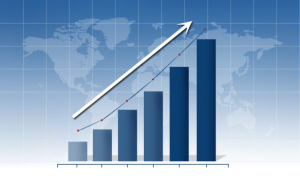por
Lauren Dubinsky, Senior Reporter | June 12, 2014
The medical robotics and computer-assisted surgical (MRCAS) technologies global market is predicted to reach $4.6 billion by 2019 with a five-year compound annual growth rate of 7 percent, according to a recent BCC Research report. The market is currently estimated at $3.3 billion.
The main drivers are the steadily aging global population and the growing demand for minimally invasive surgical procedures including heart and orthopedic surgery.
More specifically, the growth in minimally invasive cardiac surgery is due to a combination of the growing aging population, sedentary lifestyle and cholesterol-rich diets among all age groups and developments that have reduced the cost and decreased the physical trauma of heart operations, Andrew McWilliams, a health care analyst at BCC Research, wrote in an email to DOTmed News.
The growth in minimally invasive orthopedic surgeries is fueled by the disproportionate growth of older population growths, the growing amount of Americans participating in sports that more likely lead to traumatic joint injuries and developments of new minimally invasive techniques, wrote McWilliams.
Surgical robots are dominating the market right now and making up about three-quarters of it. Endoscopic surgery is the most important application worldwide, but the orthopedic application market share is anticipated to more than triple by 2019.
Another driver is the increase in hospital mergers in recent years. It could be seen as having a negative impact on the market because there are fewer hospitals and more negotiation leverage for the hospitals that remain. However, the larger hospitals are "best positioned to make the required technology investments," wrote McWilliams.
"As of a year or two ago, the trend toward hospital consolidation did not appear to have had a negative impact on the [minimally invasive surgery] market," he added. "The closure of many marginal hospitals has been accompanied by the opening of new outpatient and walk-in surgical clinics that have helped swell the demand for MIS-related products."
The U.S. is the largest player and is expected to make up almost 75 percent of the market, but it's anticipated that the Asia-Pacific region will flex some financial muscle as well. Its market is expected to grow at a compounded annual rate of 13.4 percent due to the increasing population and growing access to health care.
McWilliams believes that the global market will continue to grow after 2019.
Back to HCB News
